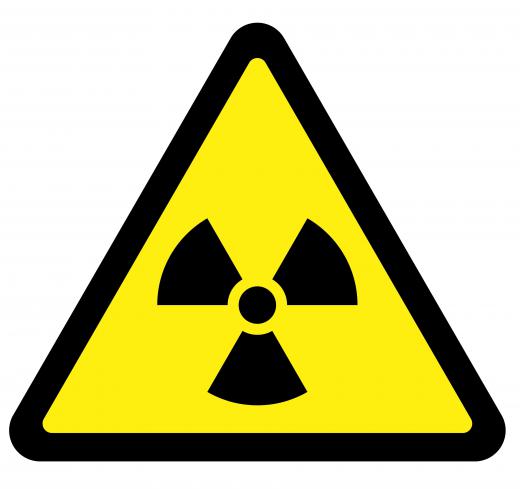What is Rutherfordium?
 Mary McMahon
Mary McMahon
Rutherfordium is a chemical element that can only be produced synthetically. Little is known about this element, since it has only been produced in small volumes, and it is difficult to study. As a result of its rarity, no commercial uses have been developed for it, and most people are unlikely to ever encounter it. This is probably just as well for average individuals, as it is radioactive.
This element can be produced synthetically by irradiating plutonium. Scientists have also succeeded in creating various isotopes of it by bombarding and irradiating various other elements. It has a very short half life, as do its isotopes, making study of the element difficult; its chemical properties are presumed to be similar to those of hafnium, a related element.

On the periodic table of elements, rutherfordium is identified with the symbol Rf, and it has an atomic number of 104, placing it beyond the actinide elements. It and other heavier elements are known as transactinide elements. Scientists assume that rutherfordium is metallic in nature, and they have made other conjectures about its chemical structure and appearance, but none of these suppositions have been confirmed.

Credit for the discovery of this element is actually contentious. Researchers at a lab in Russia led by G.N. Flerov published an article about the discovery of the element in 1964, proposing “kurchatovium” as a name to honor a famous Russian scientist. In 1969, researchers at the University of California, Berkeley were unable to replicate the work of the Russians, but they did discover some additional isotopes of element 104, proposing “rutherfordium” as a name to honor Ernest Rutherford, a 1908 Nobel Prize winner from New Zealand.

The battle over credit for the discovery of the element went on until the 1990s, when it was decided that both labs should be given credit, and the name “dubnium” was given to element 105 to honor the Russian laboratory. To add to the confusion, some scientists call it eka-hafnium.
This element and its isotopes are used in scientific research. Scientific laboratories work with the transactinide elements in the hopes of learning more about them, and hopefully finding useful potential applications for them. The radioactivity of rutherfordium can make it challenging to work with, and its short half life can be frustrating as well.
AS FEATURED ON:
AS FEATURED ON:














Discuss this Article
Post your comments